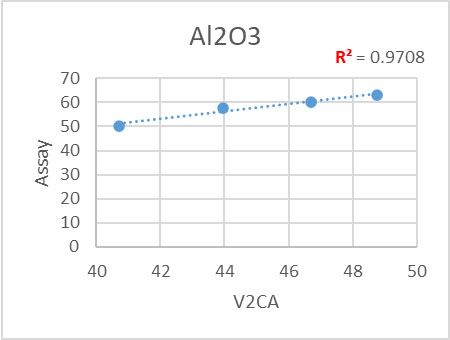Refractory materials, as the name suggests, generally refer to the raw materials used to manufacture components suitable for high-temperature conditions at operating temperatures above 1200 °C (2192 °F). They are widely used in high-temperature processes in a broad range of industries, including the steel, nonferrous metals, building materials, chemicals, power, environmental protection, and aerospace industries.
Refractory materials are commonly used in continuous casting processes, such as in tundish linings, stopper rods, sliding plates, nozzles, and other parts. Common refractory materials used for this type of application include aluminum zirconium carbon brick, aluminum carbon brick, and aluminum magnesium carbon brick.
Determining the chemical composition of refractory materials is paramount to help ensure their quality, performance, and suitability for specific high-temperature applications. When inspecting refractory materials, common items for testing include:
- Oxide raw materials
- Finished products
Here we compare two elemental analysis methods used to inspect refractory materials, highlighting their sample preparation requirements, inspection efficiency, and test results.
Comparing Elemental Analysis Methods to Inspect Refractory Materials
A commonly used elemental analysis method in the laboratory is acid-base titration. However, one technician can only produce a maximum of 2–3 sample results per day in the laboratory using this wet chemical analysis.
In the current industry where there are high requirements for regular testing and inspection of incoming materials, the internal investigation workload of refractory material companies is extremely onerous. Meanwhile, the efficiency of traditional titration methods is somewhat limited due to the time and labor required.
Portable X-ray fluorescence analyzers, also known as pXRF, provide an efficient and accurate method to measure the elemental content of the refractory material. Technicians can obtain individual inspection results as quickly as within five minutes while meeting the requirement of error margins of within ±10%.
Here’s a quick summary of the two methods:
| Inspection Methods | Sample Preparation | Inspection Efficiency |
|---|---|---|
| Chemical titration | Ground large samples and inspect them using chemical reactions (destructive method) | Can inspect 2–3 samples per day |
| pXRF | Use X-rays to test a small sample on each of its six sides, then take the average value (nondestructive method) | 5 minutes per sample |
Comparison of sample preparation requirements and detection efficiency between pXRF and chemical titration methods.
Now let’s take a look at the results. A comparison of the percentages of alumina content (synthetically produced aluminum oxide, or Al2O3) detected in the finished products is provided below:

Comparison of the Vanta Core pXRF detection results (50-second tests, averaged) and titration method results.
Here the pXRF test used a Vanta Core (V2CA) model. We can observe from the graph that there’s a good linear relationship between the averaged pXRF inspection results and the laboratory results from the chemical titration method, which confirms the reliability of inspection using the pXRF analyzer. The pXRF device can display the desired values following a simple calibration.

Vanta pXRF test results show the percentage of alumina content (Al2O3) in the refractory material.
Portable XRF technology makes it possible to achieve nondestructive, accurate, and rapid elemental analysis results. This leads to a significant improvement in inspection efficiency for refractory materials. To see how this works in action with the next-generation Vanta Core handheld XRF analyzer, reach out to our team to book a demo.
Related Content
Mill Test Reports in Metal Manufacturing: A Comprehensive Guide
E-Book: The Metal Manufacturing Cycle
5 Reasons to Choose Vanta Max and Core XRF Analyzers for Elemental Analysis


